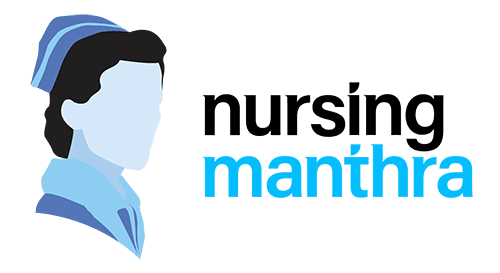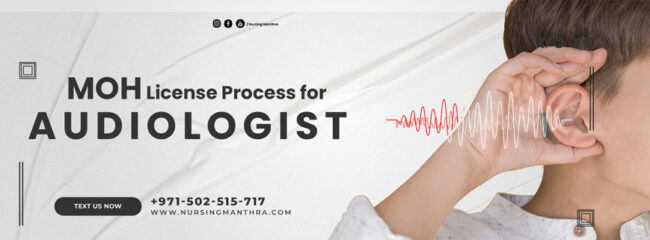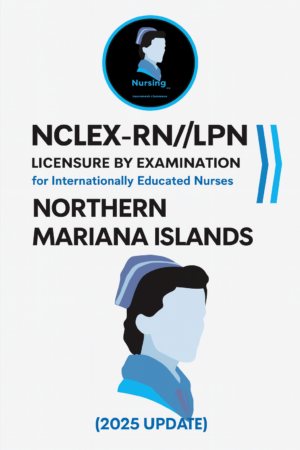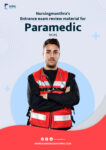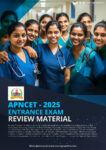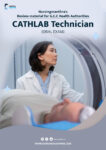Hi, I’m Shincy George, founder of NursingManthra.
If you’re a foreign-educated physical therapist – especially from India – dreaming of working as a PT in the USA, the National Physical Therapy Examination (NPTE) is your gateway.
In this blog I’ll explain:
- What the NPTE is
- The New York State (NYS) rules for internationally educated PTs
- Exam pattern, content distribution, and test dates (2025 & 2026)
- Study plan, strategies, and common mistakes
- How NursingManthra can support you through the process
If you need one-to-one guidance at any step, contact us on WhatsApp: +971 50 251 5717
1. What is the NPTE?
The National Physical Therapy Examination (NPTE) is a standardized multiple-choice exam conducted by the Federation of State Boards of Physical Therapy (FSBPT). Every US state uses NPTE scores as one of the key requirements for PT licensure.
- Purpose: To check whether you have the entry-level clinical knowledge and decision-making skills required for safe physical therapy practice.
- Who must take it? Almost all candidates, including internationally educated PTs, must pass the NPTE to obtain a PT license.
Remember: NPTE = national exam, but license = state specific (New York, Texas, California, etc.).
2. Special Focus: New York State Requirements for Foreign-Educated PTs
If your physical therapy program is outside the US and is not:
- Registered with New York State Education Department (NYSED), or
- Accredited by CAPTE/APTA
then New York applies a strict doctoral equivalency rule.
2.1 Doctoral-level education requirement
To be considered equivalent to a New York DPT program, you must show that:
- You completed a doctoral-level physical therapy program acceptable to NYSED, and
- Your total education equals at least 7 years of full-time post-secondary study, including a minimum of 3 years of full-time study at the graduate level.
In simple words:
New York expects a DPT-level qualification, not just a 4½-year BPT. Your full academic pathway (bachelor + master + post-professional DPT, etc.) must add up to 7 years or more, with at least 3 years in postgraduate/graduate study.
2.2 How does New York check this?
New York usually requires a credential evaluation from an approved agency (commonly FCCPT – Foreign Credentialing Commission on Physical Therapy).
The evaluator will:
- Compare your Indian (or other foreign) PT education to a US DPT
- Confirm total years of study, credits, and content
- Report to NYSED whether your program meets the doctoral equivalence rule
If there are deficits, you may be asked to:
- Complete additional bridge courses or
- Enroll in a post-professional DPT or other graduate-level work to reach the required level.
3. NPTE Exam Structure (New 2024+ Format)
From 2024 onwards, the NPTE-PT follows this pattern:
- Total questions:225
- Scored items: 180
- Pretest (unscored) items: 45 (mixed in – you cannot identify them)
- Sections: 5 sections × 45 questions
- Duration: 5 hours total
- Scheduled break: One 15-minute break after Section 2 (you can take unscheduled breaks, but that time is deducted from your 5 hours)
The exam is fully computer-based and delivered at Prometric test centers worldwide.
4. NPTE Question Types
You will see a mix of question formats:
- Standard questions – traditional four-option MCQs.
- Graphic questions – questions with static images (X-rays, ECGs, posture images, equipment set-ups, etc.).
- Video questions – short clips (up to ~10 seconds) requiring visual assessment (e.g., gait deviations, movement analysis).
- Scenario-based sets – patient case vignettes followed by multiple related questions testing clinical reasoning.
All items are single-best-answer multiple choice – no negative marking.
5. NPTE Content Distribution (Body Systems)
The current blueprint focuses heavily on musculoskeletal and neuromuscular systems. Approximate distribution:
- Musculoskeletal System: 27.5%
- Neuromuscular & Nervous Systems: 24.5%
- Cardiovascular & Pulmonary Systems: 13.6%
- Integumentary System: 5.3%
- Lymphatic System: 3%
- Other Systems – total ~26%, including:
- Metabolic & Endocrine – 2.8%
- Gastrointestinal – 2.3%
- Genitourinary – 2.4%
- System Interactions – 4.9%
👉 Practical takeaway:
If you are short on time, musculoskeletal + neuromuscular + cardiopulmonary should be your highest priority, as they cover >65% of the exam.
6. 2025 & 2026 NPTE-PT Dates and Deadlines
All deadlines are 11:59 PM Eastern Time.
6.1 2025 NPTE-PT Dates
| Test Date | Registration & Payment Deadline | Jurisdiction Approval Deadline | Seats Reserved Until | Scores Reported to Jurisdictions | Free Candidate Report Online |
|---|---|---|---|---|---|
| January 28–29 | December 23 (2024) | January 3 | January 14 | February 5 | February 12 |
| April 29–30 | March 25 | April 1 | April 15 | May 7 | May 14 |
| July 29–30 | June 24 | July 1 | July 15 | August 6 | August 13 |
| October 28–29 | September 23 | September 30 | October 14 | November 5 | November 12 |
6.2 2026 NPTE-PT Dates
| Test Date | Registration & Payment Deadline | Jurisdiction Approval Deadline | Seats Reserved Until | Scores Reported to Jurisdictions | Free Candidate Report Online |
|---|---|---|---|---|---|
| January 27–28 | December 23 (2025) | January 5 | January 13 | February 4 | February 11 |
| April 28–29 | March 24 | March 31 | April 14 | May 6 | May 13 |
| July 28–29 | June 23 | June 30 | July 14 | August 5 | August 12 |
| October 27–28 | September 22 | September 29 | October 13 | November 4 | November 12 |
For each test window, you must:
- Apply to the state board (e.g., New York) early enough for them to issue approval.
- Register and pay FSBPT before the registration deadline.
- Schedule your Prometric slot before the “seats reserved” deadline.
7. Step-by-Step Pathway: Foreign-Educated PT → NPTE → New York License
This is a simplified overview for an Indian-educated PT targeting New York State.
Step 1 – Confirm eligibility & choose state
- Decide that your licensing state will be New York.
- Understand the doctoral equivalence requirement (7 years + 3 graduate-level years, as explained above).
Step 2 – Credential Evaluation
- Apply to an approved agency (commonly FCCPT) for educational credentials review specifically for New York.
- Send:
- PT degree certificates and full mark sheets
- Detailed syllabus if required
- License verification from Indian state council (if applicable)
- FCCPT sends the official report directly to NYSED and sometimes to FSBPT depending on the package.
Step 3 – New York Licensure Application
- Complete Form 1 – Application for Licensure on the NYSED website and pay the required fee.
- Your university sends Form 2 – Certification of Professional Education and official transcripts directly to NYSED.
- If you have any other licenses, arrange license verifications to be sent as required.
Step 4 – FSBPT NPTE Registration
Once you have started the NYSED application:
- Create an account on the FSBPT portal.
- Register for the NPTE – PT and select New York as your jurisdiction.
- Pay the NPTE exam fee.
New York must approve your eligibility; only then will FSBPT issue your Authorization to Test (ATT).
Step 5 – Schedule Prometric Exam
- Use the ATT to book your NPTE date at a Prometric center (you can usually test in your home country or nearby region).
Step 6 – Take the NPTE & Receive Scores
- Sit the exam (5 hours, 225 questions).
- FSBPT sends scores directly to New York
Step 7 – Issuance of License
- Once NYSED has:
- Approved your education,
- Received your passing NPTE score, and
- Cleared all other requirements (e.g., character, documentation),
they will issue your New York PT license.
8. NPTE Study Plan Breakdown
3–6 Month Prep Plan
Most candidates do well with 3–6 months of focused preparation.
A simple daily schedule example:
- 3 hours per day on average
- 1–1.5 hours theory review (systems / non-systems)
- 1–1.5 hours practice questions & review of rationales
Adjust this based on your job, family, and other commitments.
9. Top Study Strategies for NPTE Success
- Active Recall & Spaced Repetition
- Use tools like Anki or Quizlet to repeatedly test yourself on key facts and clinical patterns.
- Practice Questions Every Day
- Make MCQs a daily habit.
- FSBPT’s official PEAT practice exams are highly recommended because they mimic real NPTE timing and style.
- Focus on Weak Areas
- Track scores by system (musculoskeletal, neuro, cardiopulmonary, etc.).
- Spend extra time on topics where you consistently score <60%.
- Join Study Groups
- Facebook groups, Telegram/WhatsApp communities, and online forums can provide motivation, tips, and doubt clearing.
- Simulate the Real Exam
- Do at least 2–3 full 5-hour mock exams in realistic conditions (no phone, limited breaks).
- Train both your brain and your endurance.
10. Free & Paid NPTE Resources
Free resources (podcasts & online)
You can explore:
- PT Hustle podcast
- NPTE StudyCast
- The NPTE Podcast
- Final Frontier podcast / videos
These are useful for listening during commuting, walking, or light revision.
Prep courses
If you prefer structured coaching, you may consider programs like:
- SLRC
- PT Hustle
- Final Frontier
(NursingManthra can guide you in selecting a course based on your budget, timeline, and baseline level.)
11. Common Mistakes to Avoid
- Only memorizing, not understanding
- NPTE questions are clinical scenario–based. If you only memorize lists, you will struggle with application.
- Skipping full-length timed tests
- Many students feel “ready” after notes + short quizzes, but the real challenge is 5 hours of sustained focus.
- Ignoring test-taking strategies
- Learn how to:
- Eliminate obviously wrong options
- Use educated guessing
- Avoid over-thinking when two options look similar
- Learn how to:
- Underestimating fatigue
- You must train for mental and physical stamina – long sitting, screen focus, and time pressure.
12. Exam-Day Tips
Night before:
- Sleep 7–8 hours
- Avoid heavy last-minute cramming
Morning routine:
- Eat a light, balanced meal
- Stay well-hydrated
- Reach the center early with all required IDs
During the exam:
- Aim for roughly 1 question ≈ 1 minute
- Flag difficult questions and return later – don’t get stuck
- Use deep breaths and positive self-talk when anxiety rises
13. How NursingManthra Can Help
At NursingManthra, we support internationally educated healthcare professionals with:
- Guidance on New York and other state PT licensure
- Help understanding doctoral equivalence and education gaps
- Planning NPTE timelines around work and family
- Study strategies and structured prep support
- Clarifying documentation, credential evaluation, and application steps
📲 If you need any assistance for NPTE or US PT licensure, contact:
NursingManthra WhatsApp: +971 50 251 5717
You can also follow our channel “NursingManthra” for more videos and blogs on NPTE, US licensing, and international career pathways for physical therapists.
